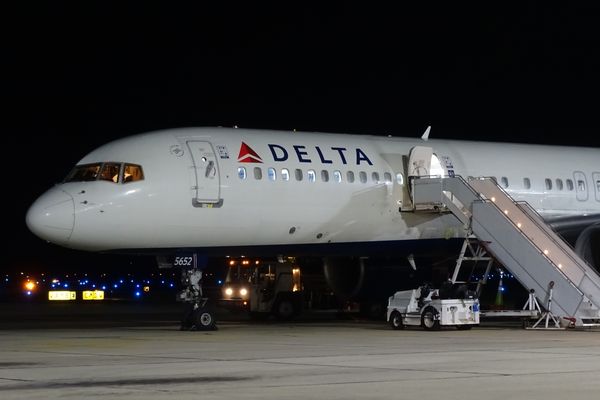The Qantas Group plans to establish an AU$400 million climate fund that will help the airline meet its net-zero targets. The fund will provide direct investments in projects and technology that will make the airline's operations more sustainable amid the growing climate crisis. The Qantas Climate Fund is expected to be the world's largest fund devoted to decarbonizing aviation once it launches.

The fund includes an AU$290 million partnership with Airbus that Qantas has previously announced, which aims to facilitate the production of sustainable aviation fuel (SAF) within Australia.
The fund will include an additional AU$110 million from Qantas for various environmental projects, including high-integrity carbon offsets, offshore SAF investments, and operational efficiency technologies.
Qantas has outlined three goals that the fund is expected to meet:
- Direct investment in technologies and projects
- Investing in other sustainability funds with goals that align closely with Qantas' sustainability targets
- Research and development partnerships

Qantas is planning to reduce carbon emissions by 25% by 2030 and have SAF account for 10% of the airline's fuel mix by 2030. The airline expects to reach net zero emissions across its operations by 2050.
Airlines prefer to use SAF as a way to reduce their emissions since it can be used with existing engines and fuel delivery infrastructure without any modifications. Although electric and hydrogen planes are currently under development, both sources will not be able to power large aircraft for the next few decades.
Qantas is currently reliant on SAF from overseas since Australia does not yet have a domestic SAF industry. The airline expects to purchase 10 million liters of SAF for flights departing from London Heathrow Airport (LHR) this year.
Furthermore, Qantas plans to purchase 20 million liters of SAF for flights departing from California starting in 2025. The airline currently operates flights to Los Angeles International Airport (LAX) and San Francisco International Airport (SFO).

Qantas aims to have domestically-produced SAF play a key role in the airline's plans for its fuel mix to be 10% SAF by 2030 and 60% SAF by 2050.
Qantas is lobbying for the Government of Australia to introduce a SAF blending mandate to help facilitate domestic SAF production. The UK, Europe, and Japan already have such policies that set mandates of between 5% and 10% by 2030. Meanwhile, the US has set a target of 3 billion gallons of SAF production annually by 2030.
Qantas Group's Chief Sustainability Officer Andrew Parker said, “We need to turbocharge [our sustainability] efforts if we are to cut our carbon emissions by 25 percent by 2030 and have net zero emissions by 2050. We're backing our targets with an expanded investment of up to $400 million to help projects get off the ground.”

In 2019, Qantas became one of the world's first airlines to announce a commitment to reaching net zero emissions by 2050. The airline has made significant progress in reaching that goal since then.
Qantas' other sustainability initiatives include the following:
- A Green Tier for frequent flyers that has helped more than 400,000 frequent flyers reduce their individual environmental footprints
- A Fly Carbon Neutral that provides customers with the ability to offset their flights
- Ending the usage of single-use plastics by 2027 and eliminating waste that is sent to landfills by 2030
Australia has the potential to become a global hub for SAF production due to the country's natural resources. For example, the state of Queensland is a major producer of sugarcane, which is one of the agricultural products that can be converted to SAF. The industry is expected to become larger in the coming years as airlines expand their sustainability initiatives and encourage the government to do the same.
Southwest and Turkish Airlines Unveil 2026 Partnership » JetBlue Opens First-Ever ‘BlueHouse’ Lounge at JFK Terminal 5 » Coloring the Clouds: How ANA Turned Airplanes into Art »
Comments (0)
Add Your Comment
SHARE
TAGS
NEWS Qantas Net-Zero Emissions Australia SAF Sustainable Aviation Fuel SustainabilityRECENTLY PUBLISHED
 Game Day: The Unseen Operation Behind College Sports Travel
At one of the largest Division I programs in the country, six-figure sports charters quietly keep game day moving. We went airside at the University of Illinois-Willard Airport to see who plans them, how aircraft and crews are positioned, and why a single schedule change can ripple through an entire airline.
STORIES
READ MORE »
Game Day: The Unseen Operation Behind College Sports Travel
At one of the largest Division I programs in the country, six-figure sports charters quietly keep game day moving. We went airside at the University of Illinois-Willard Airport to see who plans them, how aircraft and crews are positioned, and why a single schedule change can ripple through an entire airline.
STORIES
READ MORE »
 Coloring the Clouds: How ANA Turned Airplanes into Art
ANA's long-running tradition of special liveries has transformed its fleet into a flying gallery of Japanese culture, featuring iconic partnerships with franchises like Pokémon, Star Wars, and Demon Slayer. We explore these liveries and the stories behind them.
INFORMATIONAL
READ MORE »
Coloring the Clouds: How ANA Turned Airplanes into Art
ANA's long-running tradition of special liveries has transformed its fleet into a flying gallery of Japanese culture, featuring iconic partnerships with franchises like Pokémon, Star Wars, and Demon Slayer. We explore these liveries and the stories behind them.
INFORMATIONAL
READ MORE »
 End of an Era: JetBlue's Farewell to the Embraer E190
On September 9, 2025, after nearly two decades of service, JetBlue Airways brought an end to an era with the retirement of its Embraer E190 fleet.
INFORMATIONAL
READ MORE »
End of an Era: JetBlue's Farewell to the Embraer E190
On September 9, 2025, after nearly two decades of service, JetBlue Airways brought an end to an era with the retirement of its Embraer E190 fleet.
INFORMATIONAL
READ MORE »



